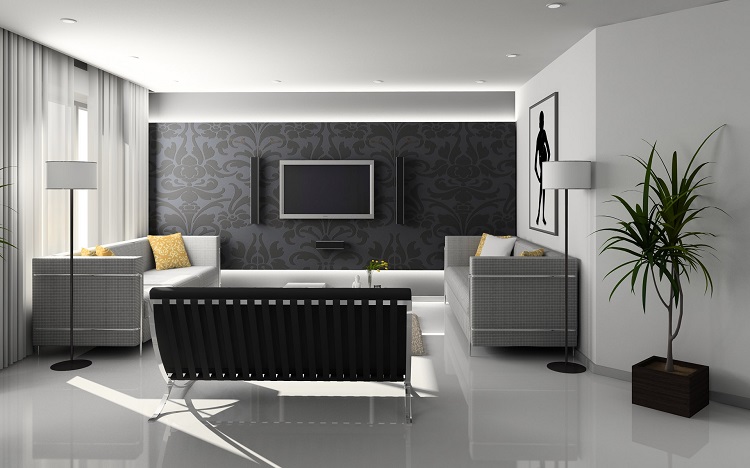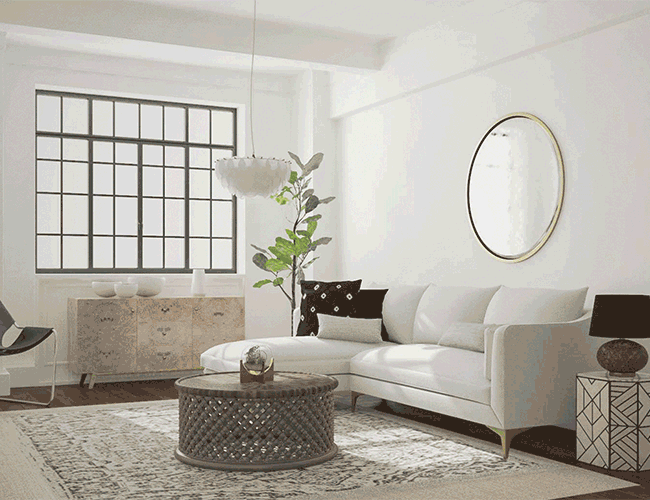When attempting to visualize how a piece of furniture will fit into a particular space, I trace its measurements on sheets of newspaper and create a cut-out. It’s a technique I learned from my mom when moving into my first apartment, trying to gauge whether a nightstand I wanted would be too wide. While effective in approximating floor space, height and visual weight were left unaccounted for. The nightstand worked, but there was no way of knowing for sure until the transaction had occurred and the furniture was installed in its designated place.

Aided by developments in artificial intelligence and augmented reality, a growing number of interior design platforms are striving to eliminate the guesswork that, until now, has been unavoidable when buying furniture.
Augmented reality is not new — Pokémon Go and Snapchat face masks are familiar examples — but Apple’s announcement of its forthcoming ARKit platform for iOS 11 at WWDC in June thrust the technology into the mainstream. Among the first planned implementations is an as-of-yet-unnamed app from IKEA. The Swedish furniture giant already offers an app that supports in-room visualization, but ARKit will take the digital catalogue to the next level — automatically scaling furniture within 0.03 inches (1 mm) of accuracy and adjusting color relative to the light within a space. The technology will eliminate the need for measurements altogether, enabling more reliable purchasing decisions, especially without having gone to a store beforehand.
A handful of new interior design platforms are relying on augmented reality and artificial intelligence technologies to streamline the process of decorating.
Lowe’s and Pottery Barn have toyed with augmented reality catalogues using Google’s Tango technology, but their adoption has been limited by the fact that there are just two Tango-enabled devices (the Lenovo Phab 2 Pro and Asus ZenFone AR) on the market today. By contrast, apps built with Apple’s ARKit will work on all iPhones and iPads running on iOS 11 when it rolls out in full later this year.
Until then, a handful of new design platforms are relying on augmented reality and artificial intelligence to streamline the decorating process, democratizing renderings previously reserved for professional interior design services. Hutch is one such app. Founder Beatrice Fischel-Bock says that the concept grew out of her experience providing decorating advice to friends in college. Without ever setting foot in a space, Fischel-Bock would use architectural standards — like electrical outlets being 18 inches above the floor — to develop a sense of scale from photographs. Hutch now automates the work that Fischel-Bock once did on her own, relying on artificial intelligence to create digital renderings from photos taken directly in the Hutch app in as little as one hour.
Users then apply filters curated around design trends and aesthetic movements to the rendering of their space, with the option to purchase furniture through the app. Hutch currently lacks the ability to keep existing furniture in a room or rearrange digitally rendered items, though Fischel-Bock says that those, as well as the option to upload multiple images for each room, are in the works. There’s also the possibility of an ARKit integration: “We always make sure to provide our users with the latest in consumer technology in order to keep the experience as relevant as possible,” she says.
“I think that AR is a really nice feature to add to [interior design] visualizations,” says Shanna Tellerman, founder and CEO of digital design platform Modsy, based in San Francisco. Whereas Hutch is as low-lift an experience as can be, Modsy is more labor-intensive, relying on user-submitted room dimensions and pictures taken from specific vantage points to build renderings, but yields more personalized results thanks to human input.
Tellerman believes that fast and easy renderings are augmented reality’s greatest advantage. “We’d love to make [measurements] totally frictionless, to have you just take photos and not worry about measurements at all…. Not only for the room, but also for any item that you want to keep in your room.” In its current state, augmented reality visualizations are best applied to bare spaces, with no simple way of removing an existing piece of furniture to visualize how something else would look in its place.

Modsy currently uses artificial intelligence to build the shell of a room and tasks trained designers with curating and placing furnishings according to a customer’s taste. Unlike Hutch, which can produce furniture-stripped renderings in an hour, Modsy’s human touch requires a few days turn-around, though Tellerman notes that improvements to augmented reality will accelerate the process.
“We’ve built really sophisticated, proprietary tools that the Modsy designers use [to create] really photorealistic visualizations,” Tellerman says. More refined technology will enable automate renderings, and allow Modsy to generate 360-degree views and give customers the ability to edit floor plans; but, Tellerman says, augmented reality is not a solution unto itself. “It needs to be wrapped into a larger experience.”
In many ways, Modsy parallels the digital renderings that interior design studios present to clients, though traditional 3D design platforms don’t employ algorithms or automation. International interior design studio Décor Aid offers both in-person and online design consultations, relying on digital renderings to visualize spaces. Company CEO Sean Juneja believes that while augmented reality is in its early days, it’s “going to completely revolutionize the interior design and furniture industries.”
“In a handful of years, we’re going to look back and think, ‘Wasn’t it crazy that we used to try to … buy furniture without visualizing [it] first?’”
Beyond returning accurate visualizations in less time, Juneja notes that augmented reality can save customers money. “Returns and exchanges are a significant pain point for this industry, and it’s a huge cost burden for customers and vendors. Seeing how a piece fits within a space before purchasing allows us to source furniture directly from the manufacturer instead of going through a physical retail store. All of this means significant savings for our customers.”
There’s little doubt that more exceptionally practical applications of augmented reality will come to fruition in the wake of Apple’s ARKit release, with visualizations growing increasingly refined. “In a handful of years,” Tellerman muses, “we’re going to look back and think, ‘Wasn’t it crazy that we used to try to design our homes and buy furniture without visualizing them first?’”
Source: Gear Patrol




